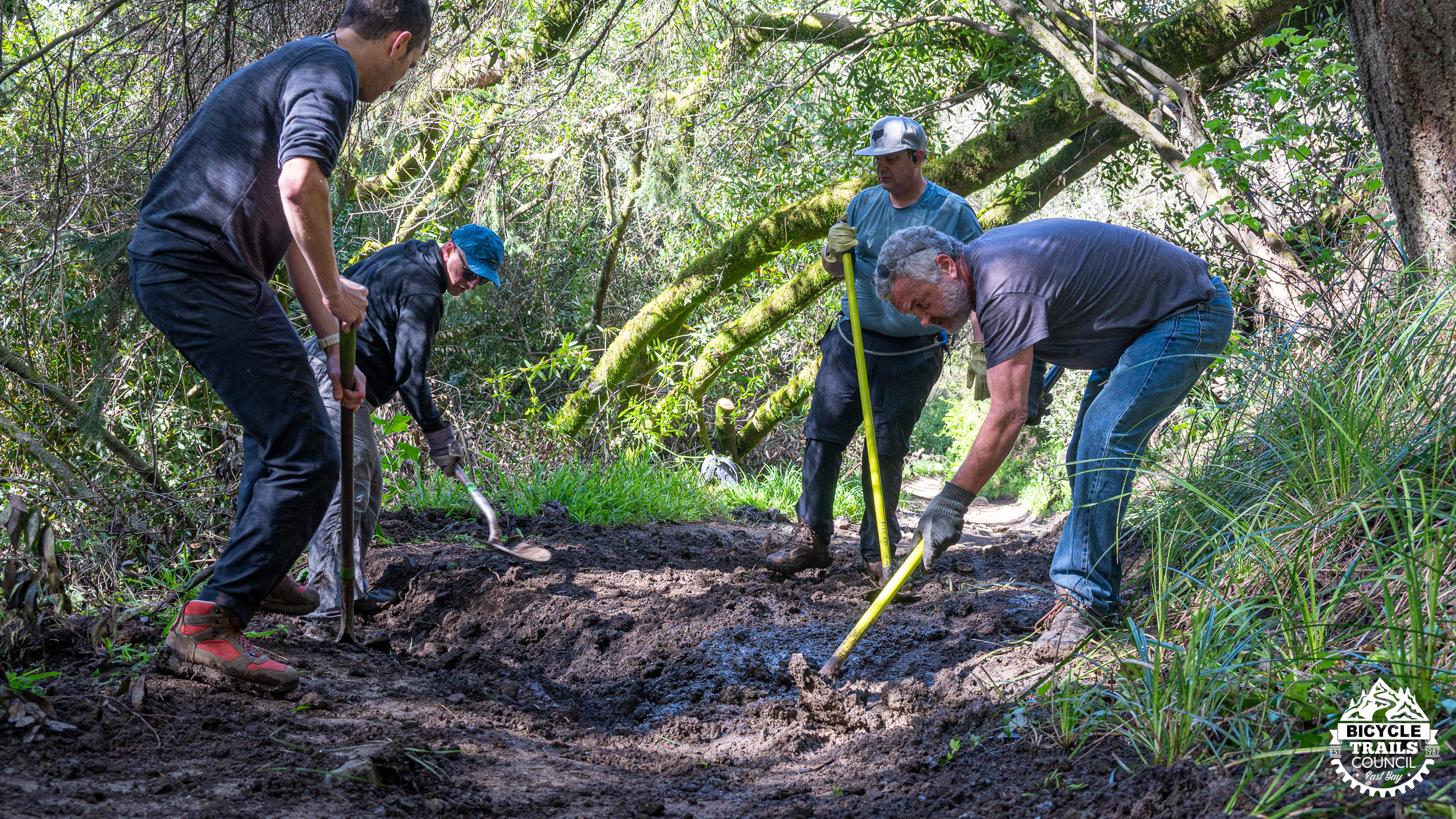by Scott Bartlebaugh

In addition to meeting up with mountain bike riders at Briones interested in advocating for better trails we also try to work with other trail users to understand how we can coexist, share trails and parks better and improve the experiences for all users. Explosive growth of trail users during the past year under COVID has amplified already existing issues. I met up with Amelia Marshall from the Metropolitan Horseman’s Association and Kerry Roussellot a frequent rider at Briones with a horse stabled nearby. We hiked a loop from the Alhambra Creek staging area up Alhambra Creek and Spengler trails, then down Briones Road and Pine Tree trail and back along Orchard Trail. This is a common loop for equestrians due to a number of stables near that trailhead and it gets ridden in both directions. Social or bootleg trails in and of themselves generally weren’t the major issue and the majority of interactions with cyclists go well. The interactions that don’t go well have potential to result in very serious injury.

Trail intersections and bike speed when approaching and riding through them was a significant concern. Several of these were where bootleg trails meet the existing fire roads including right at the Alhambra Creek trailhead, where Hank & Franks comes into Alhambra Creek, and at the Alhambra Creek / Diablo View / Spengler intersection. This is something we can impact with our choices. Think of intersections like intersections at a ski resort where you need to slow down, be extra cautious and look for others. Think of them as no wake zones. We love to carry speed after we’ve worked hard against gravity but doing it at the expense of other users isn’t going to help make our case for more access and more challenging trails.

Basic etiquette and knowledge of how a horse views a cyclist was another concern. Horses often perceive cyclists as a predator. This can happen more so when cyclists are above a horse on the high side of a trail or if we come into their peripheral vision. Their response to predators is flight and often they may suddenly turn around or rear up to get away. Horses are familiar with human voices and this can help them understand that we aren’t predators.
Some points to keep in mind when encountering horses:
- Expect you’ll encounter other users on the trail
- Consider the available sight line and ride at a speed that allows you to get stopped safely
- Slow to walking speed and be ready to stop
- Soft pedal to avoid the freehub clicking sound (it may sound like a rattlesnake to the horse)
- Use your voice to let the rider and the horse know you’re there
- Ask the rider if they need you to stop. If it’s not clear then stop. Err on the side of a skittish horse.
- If stopped try to avoid unnecessary movements or sounds other than conversation
- Wait for the rider to let you know it’s ok to pass before you pass
Pine Tree Trail was another key concern. Pine Tree trail is a recognized trail in the trail system, and it’s closed to bikes. The upper and lower sections are open with good sight lines and room to get off the trail. In the middle there’s a section with very limited sight lines, a narrow bench, and steep exposure below and steep slope above. This is a spot that when an equestrian encounters a bike things can go very badly very quickly. The alternative for cyclists is Briones Road.
Last of the top concerns were mountain bikers that are verbally abusive. This isn’t the majority of mountain bikers. Maybe it isn’t anybody reading this. Sure there are other trail users that don’t share the trails as well as we’d like. There’s people with earphones in that can’t hear you call out or ring and then are mad when you startle them. There’s the dog walker with long leads or those that don’t control their dog. Maybe it’s horse manure on the trails that pushes the wrong button for you. Please, particularly with the high use the trails are seeing, take a deep breath and then another two or three, and try to take the high road. Even if you’re justified it probably doesn’t help correct the situation and it doesn’t help us get more access or better trails.
The parks are a shared public resource. Do mountain bikes have their fair share of trail access? Nope. The majority of park users have more in common than they have differences. Organizations and regions that have been successful have focused on better experiences for all users. Advocacy progresses slowly even in areas that are successful. Let’s make choices that don’t make it go even slower. If you got this far thanks for listening. We’re all advocates either for or against.



